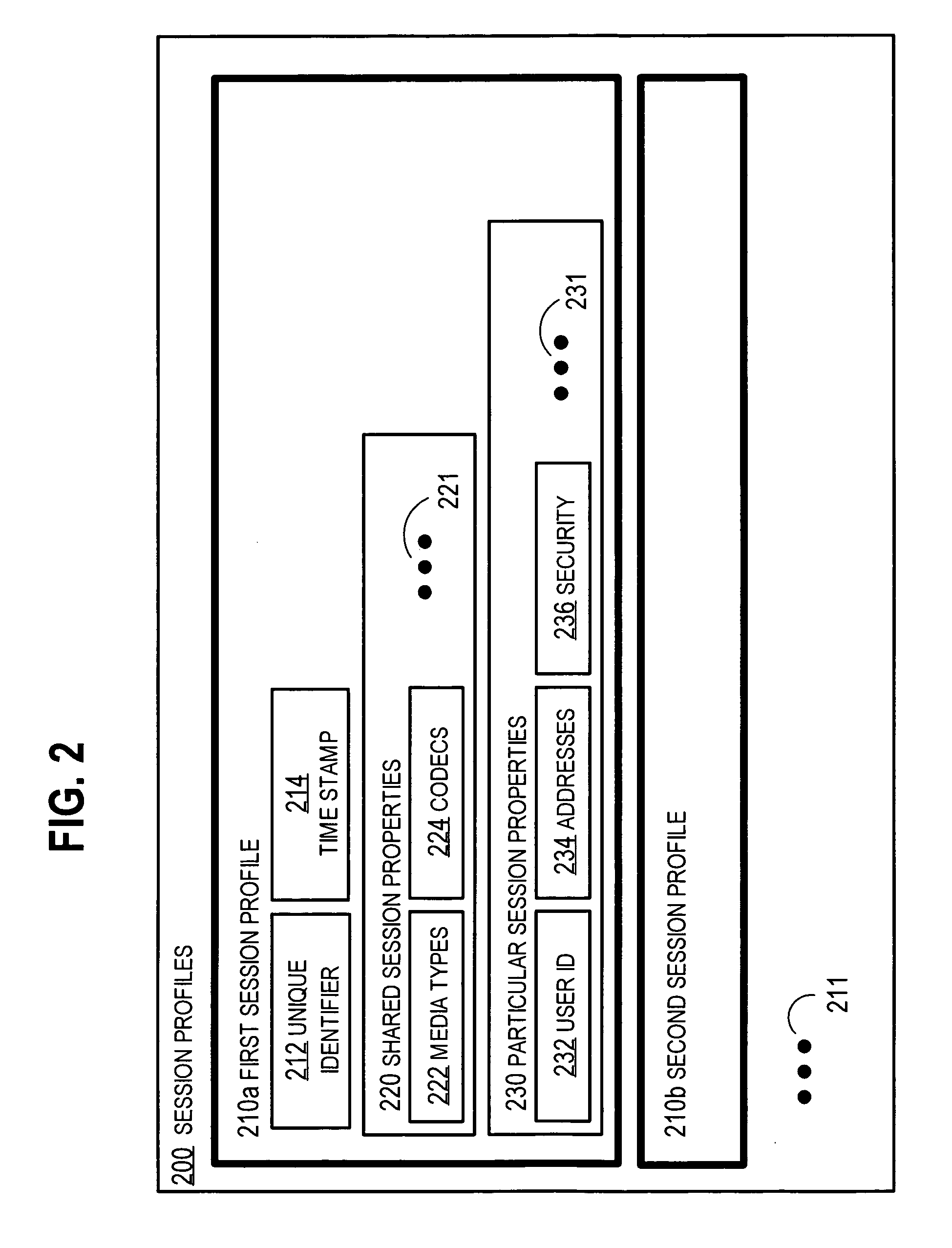Techniques for reducing session set-up for real-time communications over a network
a real-time communication and network technology, applied in the field of session-oriented network communications, can solve the problems of consuming substantial network bandwidth, consuming resources and time, and consuming resources
- Summary
- Abstract
- Description
- Claims
- Application Information
AI Technical Summary
Benefits of technology
Problems solved by technology
Method used
Image
Examples
embodiment 420
[0062]FIG. 4A is a flow diagram that illustrates details of step 320 of the method 300 of FIG. 3, according to an embodiment 420. Step 420 is a particular embodiment of step 320, but not the only embodiment.
[0063] In step 402, it is determined whether there are session properties of a current session to use. If so, control passes to step 403. Otherwise, control passes to step 406. For example, if the triggering condition in step 310 is a delayed session setup, then there are session properties of a current session to use, and control passes to step 403.
[0064] In step 403, session data for the current session is received from a session initiation process for storage in step 330, described below. Some of this session data might not be appropriate for the next session. For example, the nonce and session key received from a SIP Proxy acting as a security server 118 are used once; so the nonce and session key for the current session are not appropriate for the next session. Therefore co...
embodiment 430
[0091] A particular embodiment of step 330 is described in more detail below with reference to FIG. 4B. FIG. 4B is a flow diagram that illustrates details of a step 330 of the method 300 of FIG. 3, according to an embodiment 430. Step 430 is a particular embodiment of step 330, but not the only embodiment. Step 430 includes steps 432, 434.
[0092] In step 432, a unique identifier is determined based on the first and second identifiers exchanged in steps 422, 424, described above. For example, the two identifiers are concatenated or hashed to form a single unique identifier. In some embodiments, step 432 is omitted and the unique identifier is determined based on other data exchanged between the local and remote end nodes.
[0093] In step 434, the unique identifier is stored in association with the session data in the session profiles data structure. For example, in the illustrated embodiment, the unique identifier is stored in field 212 in the session profile for the next session using...
PUM
 Login to View More
Login to View More Abstract
Description
Claims
Application Information
 Login to View More
Login to View More - R&D
- Intellectual Property
- Life Sciences
- Materials
- Tech Scout
- Unparalleled Data Quality
- Higher Quality Content
- 60% Fewer Hallucinations
Browse by: Latest US Patents, China's latest patents, Technical Efficacy Thesaurus, Application Domain, Technology Topic, Popular Technical Reports.
© 2025 PatSnap. All rights reserved.Legal|Privacy policy|Modern Slavery Act Transparency Statement|Sitemap|About US| Contact US: help@patsnap.com



